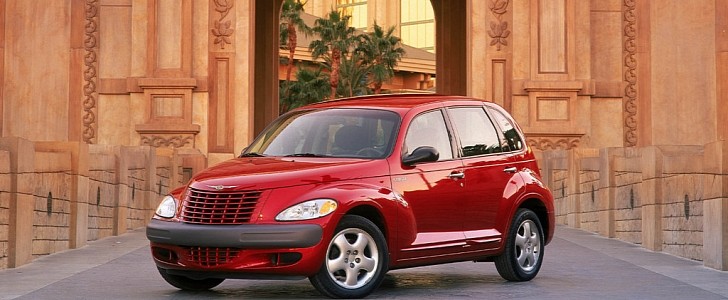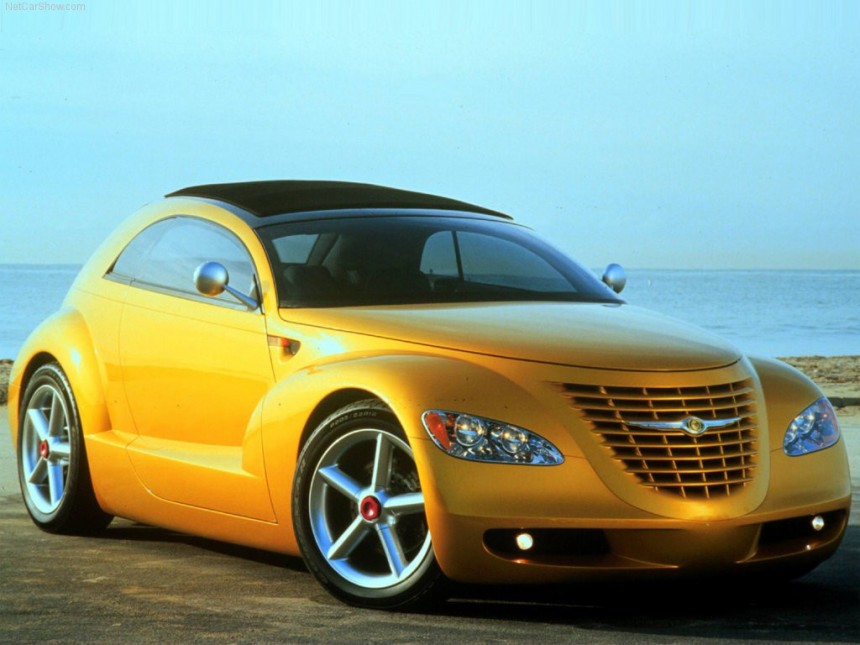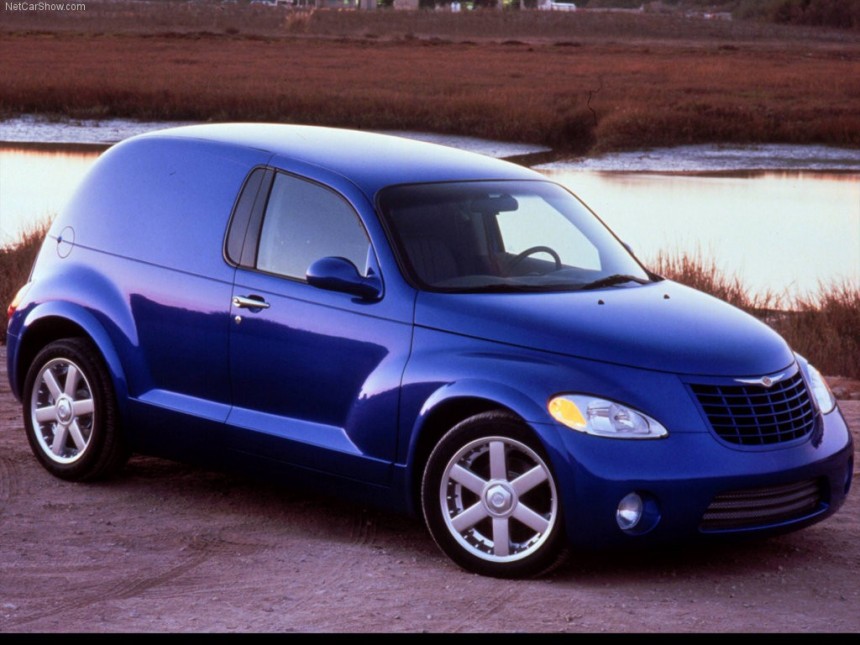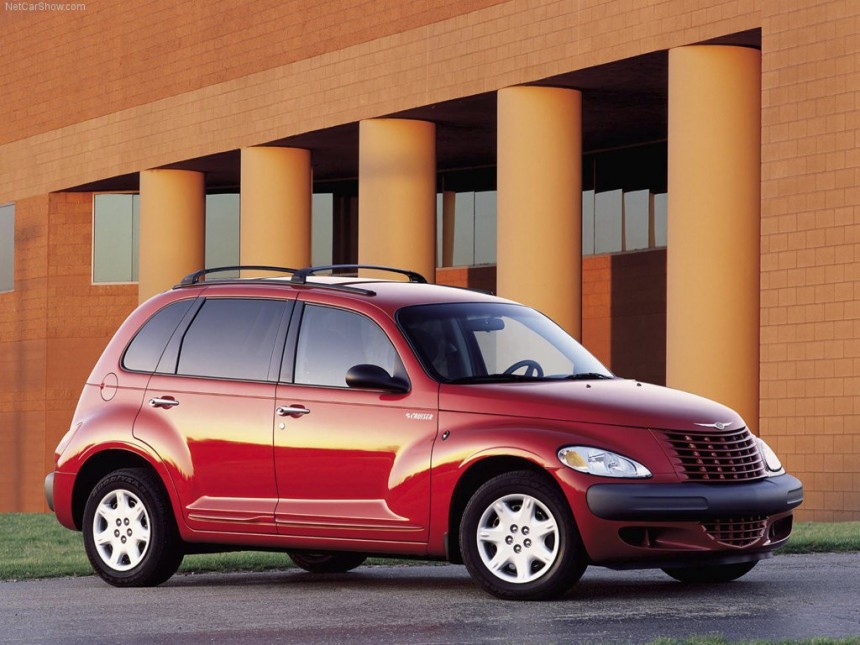At an official level, Chrysler said that the PT Cruiser has its roots in the 1997 CCV concept car. Yet, that's hard to believe since there were no plastic panels, no affordable price, and, thankfully, not that hideous design. But when it said that the PT was related to the 1999 Pronto Cruizer, we believed it.
Our journey in the Concept to Reality world stops today in Chrysler's yard. After its successful result with the Viper, Chrysler tried to revive the Plymouth brand. Unlike the V10 supercar, this time it had to play on the economic side. But it couldn't sell a production version of the CCV in the U.S. It was a way too cheap vehicle, not to mention that it could hardly pass the IIHS crash testd, if even.
Then, in 1999, it unveiled the Pronto Cruizer (yes, with a Z) designed by Bryan Nesbitt. It was an awesome-looking three-door hatchback that evoked a retro-style design. Its flared arches, curved greenhouse, and "cheetah" stance from Plymouth Prowler made people say, "shut up and take my money." At that time, the production version was already in an advanced development process.
Chrysler built the vehicle so it could pass as a van according to the NHTSA regulations. That could help companies get better grades for the CAFE agreement that killed many great cars. Thus, company owners could get vehicles built for transporting people, but were allowed to have a lower average fuel consumption, so they could get a gas-guzzler for themselves. Not a bad idea, after all.
But what happened with the concept when it turned into a production variant? In 2000, Chrysler unveiled a panel-van version, which featured two side doors and a tailgate in the rear. It looked so close to a production version that you could bet it would make it on the market. Yet, it didn't happen. The same year, the PT Cruiser appeared in a five-door shape as a 2001 model year.
In the beginning, dealers were assaulted by customers. The MSRP was lower than the actual selling price, and nobody could dare to ask for a discount. Nevertheless, it was a true initial success. The car received the honors and the "Car of the Year" award from MotorTrend. But then, something happened, and sales plummeted.
Chrysler made the car as a modern interpretation of the Airflow from the '30s. PT Cruiser's lines were inspired by older vehicles, but in a modern interpretation. It didn't have round headlights or taillights. Yet, it kept the flared wheel arches both front and rear. Its greenhouse was tall, and, moreover, the seating position was high. Thus, many grandmothers remembered the car from their teenage years, and signed checks for the PT Cruiser. All of a sudden, the car was not that cool anymore. After all, who would like to see you, in your 20s, driving the same vehicle as your grandma?
So was that PT Cruiser a failure because of its design? That's only half of the truth. In fact, the five-door design version attracted more people than intended, so that was ok from an economic point of view.
But people looked back at the cool-looking Pronto Cruizer and couldn't help to ask, "where is that promise?" Looking at the concept next to the final product, side by side, reminds me of the picture with a $5 tattoo and a $100 tattoo. Even though creating a three-door version for the PT Cruiser wasn't expensive, Chrysler didn't do it.
The company hoped that a punchier version would help sales and introduced the PT Cruiser GT, which featured a turbocharged four-banger mill carried over from the Dodge Neon SRT. Its 230 hp were sent to the front wheels via a five-speed manual. It was a surprising car, a factory-built sleeper. But that didn't work either.
Where did Chrysler go wrong? First, the design was fine, but there was no three-door option. Another problem was the interior, which was below expectation. True, the design was retro, but cool. But those flat seats were just awful. Just try sitting on those for more than one hour, not to mention on the flat, hard rear bench? All I think is that they were designed to make chiropractors rich.
It took Chrysler almost four years to introduce the convertible, which was way better, and its safety arch was excellent for carrying surfboards. But that came in 2005, when the car's reputation was already compromised on the market.
Last but not least, the platform was wrong. Its rear suspension made it lean and jump on corners, and definitely shouldn't have been installed on a 2000's passenger vehicle. But since it was considered as a van, why not? (even though I've driven many vans with a much better rear axle setup).
Chevrolet partly failed with the 2011 Volt due to its high price, broken promises, and misleading drivetrain. Viper was successful thanks to its massive engine. But the PT Cruiser failed in almost any category. Yet it stayed on the market for a decade (and survived the DaimlerChrysler alliance), not because it was a great car. It stayed because it was cheaper than replacing it, especially during the world financial crisis that struck carmakers. But, as soon as the economy bounced back, it was axed and never replaced.
Then, in 1999, it unveiled the Pronto Cruizer (yes, with a Z) designed by Bryan Nesbitt. It was an awesome-looking three-door hatchback that evoked a retro-style design. Its flared arches, curved greenhouse, and "cheetah" stance from Plymouth Prowler made people say, "shut up and take my money." At that time, the production version was already in an advanced development process.
Chrysler built the vehicle so it could pass as a van according to the NHTSA regulations. That could help companies get better grades for the CAFE agreement that killed many great cars. Thus, company owners could get vehicles built for transporting people, but were allowed to have a lower average fuel consumption, so they could get a gas-guzzler for themselves. Not a bad idea, after all.
But what happened with the concept when it turned into a production variant? In 2000, Chrysler unveiled a panel-van version, which featured two side doors and a tailgate in the rear. It looked so close to a production version that you could bet it would make it on the market. Yet, it didn't happen. The same year, the PT Cruiser appeared in a five-door shape as a 2001 model year.
Chrysler made the car as a modern interpretation of the Airflow from the '30s. PT Cruiser's lines were inspired by older vehicles, but in a modern interpretation. It didn't have round headlights or taillights. Yet, it kept the flared wheel arches both front and rear. Its greenhouse was tall, and, moreover, the seating position was high. Thus, many grandmothers remembered the car from their teenage years, and signed checks for the PT Cruiser. All of a sudden, the car was not that cool anymore. After all, who would like to see you, in your 20s, driving the same vehicle as your grandma?
So was that PT Cruiser a failure because of its design? That's only half of the truth. In fact, the five-door design version attracted more people than intended, so that was ok from an economic point of view.
But people looked back at the cool-looking Pronto Cruizer and couldn't help to ask, "where is that promise?" Looking at the concept next to the final product, side by side, reminds me of the picture with a $5 tattoo and a $100 tattoo. Even though creating a three-door version for the PT Cruiser wasn't expensive, Chrysler didn't do it.
Where did Chrysler go wrong? First, the design was fine, but there was no three-door option. Another problem was the interior, which was below expectation. True, the design was retro, but cool. But those flat seats were just awful. Just try sitting on those for more than one hour, not to mention on the flat, hard rear bench? All I think is that they were designed to make chiropractors rich.
It took Chrysler almost four years to introduce the convertible, which was way better, and its safety arch was excellent for carrying surfboards. But that came in 2005, when the car's reputation was already compromised on the market.
Last but not least, the platform was wrong. Its rear suspension made it lean and jump on corners, and definitely shouldn't have been installed on a 2000's passenger vehicle. But since it was considered as a van, why not? (even though I've driven many vans with a much better rear axle setup).


















